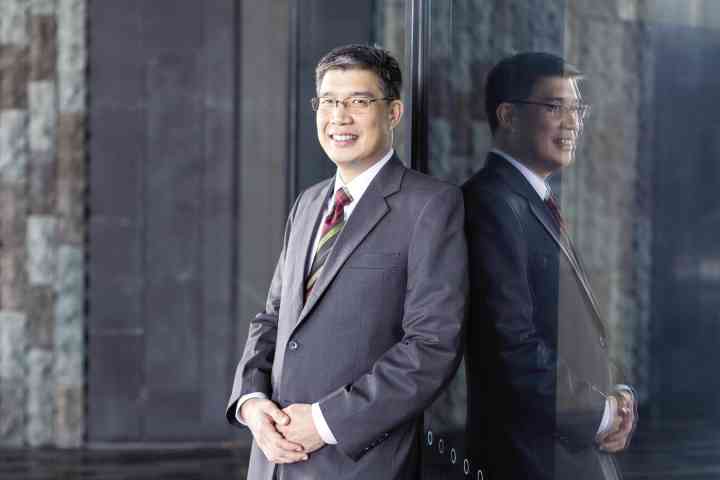Remember those rubber bands in Liza Frank pastels and neons?
A truckload of these loom band kits was making its way every day to Divisoria when the fad kicked off, answering the demand from kids and adults seeking to bind friendships with not just one, but more than two gaudy bracelets.
The truck had UPS’ name plastered across its body—remarkable because it’s a company that has a reputation favored by high-end customers and well-oiled manufacturing firms across the country, not by grimy and tough Divisoria. But the company delivered, so to speak.
UPS Philippines managing director Tim Gohoc recalls how shops in the country’s favorite market tapped the international logistics firm’s help when massive deliveries could not reach them because of the congestion in Manila ports. He says vendors usually make do with deliveries by sea, keeping costs at the minimum.
Yet, sourcing the help of one of the world’s fastest couriers proved economical and profitable to businessmen trying to act fast before the bandwagon fades to oblivion.
“This story is quite an interesting thing. These [loom bands] are low-value shipments, but because of the demand, they were still able to make a profit even if they decided to ship by air … Indeed, being first to market does count,” Gohoc says.
It is this kind of disruption that does not bother UPS, which says companies must work around hurdles that will eventually change the dynamics of markets. Gohoc says UPS wants to embrace these challenges and become the disruption itself.
Case in point is the parent firm’s move to invest in 3D printing.
How can an emerging technology disrupt trade flows, the business that is keeping alive the likes of UPS?
“On-demand manufacturing allows certain goods to be transported digitally to their location before taking shape as a physical product. It is the combination of being able to produce closer to consumption, and UPS’ physical logistics network which will set UPS apart,” Gohoc says.
The firm partnered with Fast Radius in Singapore to adapt to this looming shift in manufacturing.
“UPS has started on this 3D printing journey since 2013 and we’ve been observing the progress of 3D printing for a while now, paying particular attention to its capacity to impact our operations, as well as the operations of businesses throughout Asia—particularly manufacturers and high-tech companies,” he says.
According to a UPS survey, 70 percent of global respondents are already trying to acquire the know-how in 3D printing. The survey revealed, however, that Asia-Pacific only accounts for 27 percent of this.
“Therefore, we can expect the use of 3D printing to expand in Asia,” Gohoc says. And the Philippines should not hesitate to make room for this innovation, he adds.
He says local businesses can, at this point, use 3D printing for prototyping and producing custom-made products for discerning customers. Entrepreneurs can focus on manufacturing without having to be burdened by the “minimum quantity orders” required in factories to keep costs down, he says.
“Multinational enterprises can also rely on 3D printing to move toward zero-inventory warehousing, as products can be developed on an as-needed basis,” Gohoc adds.
UPS has always embraced the technological shift, a reality that proved the downfall of many global firms, he says. UPS is in a position to monitor trends (the loom band craze, for one), having been in the business of packaging products for decades and seeing the changing tastes of consumers, he adds.
He cites, for example, the rise in e-commerce.
Between 2016 and 2020, UPS says online retail across the globe will grow 3.5 times the GDP rate while online cross border trade is expected to grow six times the GDP.
“In the Philippines, we have seen a significant growth in Amazon orders … We’ve seen a lot of orders for books, music and garden tools,” he notes.
The firm is hands-on when it comes to industrial customers, using technology for supply chain mapping purposes in order to make seamless deliveries for them from point A to point B, Gohoc says. UPS was also one of the pioneers in the tracking system in answer to e-commerce, allowing customers to determine where their packages are at any point in time.
While the firm can flourish in advances in the global trade, regulations in countries can also become a roadblock. Infrastructure woes and bottlenecks in countries like the Philippines are problems, even if it can easily brandish digital tools.
The United States, under President Donald Trump, is embracing protectionism that could prove a death spell to manufacturing firms across the world. Just recently, Trump promised to impose a “Buy America” rule in an attempt to bring back jobs from overseas.
Gohoc says the US is still UPS’ major trade lane vis-à-vis the Philippines. Yet, there are “bright prospects” in Europe and especially in intra-Asia, he says. The goal, he says, is to help customers every step of the way, whether through digital or traditional means.
Even President Duterte’s firebrand style of management and pivot away from the US can’t be a hindrance.
“Over the years, UPS has worked well with various presidents. All presidents, including President Duterte, are pro-business … Right now, there are political pressures and some social pressures, but business will continue and we have not seen any shift in trading patterns,” he says.
At the end of the day, “we measure our performance based on on-time delivery. And this is one of the keys to success that UPS can brag about. We have nothing to sell, it’s only our service,” Gohoc says.


